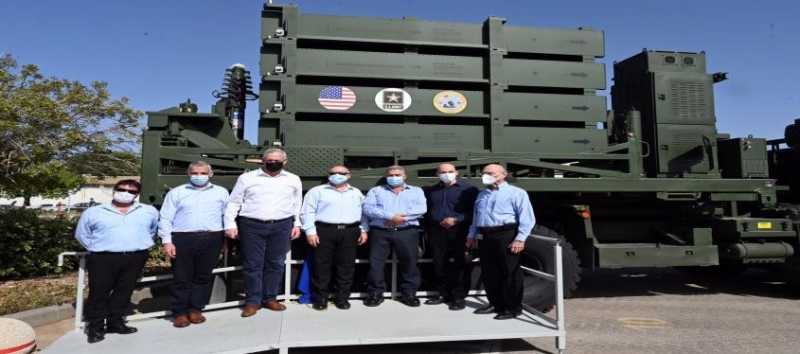 The ongoing debate on the Army budget focusses on its large share at 55.5% of the total allocation for Defence, with the major share of 45.5% for revenue expenditure, and 10% for capital, in the current financial year. This is not a new phenomenon, given the size of the Indian Army of 13 lakh personnel.
The ongoing debate on the Army budget focusses on its large share at 55.5% of the total allocation for Defence, with the major share of 45.5% for revenue expenditure, and 10% for capital, in the current financial year. This is not a new phenomenon, given the size of the Indian Army of 13 lakh personnel.
Data from XII plan onwards shows that allocation for army has been in the range of 55-56 % of the total defence allocations from 2016 -17 onwards. The revenue allocation increased from 40% in 2012-13 to 45.5 % in 2020-21 with spikes in 2015-16 and 2016-17.The capital allocation, on the other hand had no substantial increase, and after a marginal hike, has since declined. In fact, over a period of ten years, it has declined from an average of 12% in the XI Plan to 10.5 % in XII Plan.
ARMY XII PLAN ALLOCATION (Rs in Crores)
YEAR Defence BE BE CAP % BE REV % TOTAL%
2012-13 1,93,407 19,238 10 77,327 40 50
2013-14 2,03,672 17,884 8.8 81,119 39.8 48.6
2014-15 2,29,000 26,533 11.6 91,844 40 51.6
2015-16 2,46,727 27,342 11 1,03,316 42 53
2016-17 2,49,099 26,936 10.8 1,12,765 45 55.8
Total 11,21,905 1,17,933 10.5 4,66,371 41.5 52
ARMY ALLOCATION 2017-18 TO 2020-21
YEAR Defence BE CAP % REV % TOTAL TOTAL%
(REV+CAP)
2017-18 2,59,262 25,206 9.7 1,19,962 46.3 1,45,168 56
2018 -19 2,79,305 26,816 9.6 1,27,060 45.5 1,53,876 55
2019 -20 3,05,296 29,461 9.6 1,41,501 46.3 1,70,962 56
2020 -21 3,23,053 32,392 10 1,46,940 45.5 1,79,332 55.5
(Source: Report of Standing Committee on Defence and DSE) (Rs. In Crores)
Manpower
The Indian Army has always been manpower intensive and the authorized strength has been in the range of 12 lakhs for a long time. If we compare the figures for last five years; the authorised strength in 2014 was 11,98,037 (officers 47,574 Other Ranks 11,50,463) and in 2019 it was 12,73,693 ( 50,312 officers and 12,23,381 Other Ranks).However, what must not be lost sight of, is the recurrent problem of shortage of personnel in the army, which means that the held strength is always lower than the authorized strength. As per statement of the Defence Minister to Parliament, there were 45,000 vacancies as on 1 Jan 2019.
If we view the trend in the allocation on pay and allowances as a percentage of revenue allocation to the army, over a time span of two decades, then it is seen that the share of Pay and Allowances which was about 50% in 1992-93 increased to 64% in 2011-12. In the current financial year 2020-21 expenditure on pay and allowances is 63% of revenue budget. The pay package of Armed Forces personnel however cannot be compared to civilians in view of their service conditions. The picture is more complex and successive Pay Commissions have not disputed the grant of Military Service Pay and allowances linked to the hardship to compensate the military personnel. The soldier deployed in the inhospitable terrain of the Northern borders has to face harsh climactic conditions apart from the enemy action on the one hand and terrorists and insurgency in addition To keep the troops deployed in these remote areas combat ready, they are regularly rotated from the forward posts, for which adequate reserves have to be maintained. The units deployed at the LAC also have a periodic turnover to avoid mental fatigue, permanent physical disabilities and enable the soldiers to return to their families as essential ‘rest and rehabilitation’ requirement. Therefore, downsizing of the army, especially the combat arms has to factor in these ground realities. At the same time there is need to bring in some organisational change in current practices like inhouse repair and maintenance echelons to outsourcing. For logistics, leasing of transport on long term contracts, will bring savings in manpower and capital cost.
Weapons and Equipment
The allocations for manpower have been at the cost of the allocation for operations, maintenance and capital expenditure. It may be noted that the pay and allowances are a committed expenditure where as the allocations for stores, works etc are subject to budget allocations. Hence, if the allocations itself are less than naturally the pay and allowances component will show a higher allocation. Nevertheless, the army has been almost spartan in its approach to equip its troops even with basic weapon – the assault rifle – wherein most of the Army is only equipped with the antique OFB produced INSAS assault rifle
Despite operating in an active border, when hand held imagers were inducted so that troops are not night blind, it was done in a phased manner. Moreover, the units which were provided the equipment were authorised only one imager per platoon. The initial procurement of T-90 tanks was done without the air-conditioning to save costs. The climate control equipment was acquired later, not for the comfort of the troops, but only when the sophisticated electronic equipment started malfunctioning. These moves may have saved costs but in the long run may have cost lives and additional expenditure being piece meal procurements.
In a deposition to the Parliamentary Committee on Demand for Grants the Army brought out that any modern Armed Forces should have one-third of its equipment in the vintage category, one-third in the current category and one-third in the state-of-the-art category. However, in the Indian Army, 68 per cent of the equipment is in the vintage category, about 24 per cent in the current, and 8 per cent in the state-of-the-art category. With more than half of the equipment in the vintage category, for how long can the army rely only on the grit and bravery of its soldiers?
Piecemeal procurements and the flurry of emergency procurements at the time of crisis are not the solution, rather it means buying at much higher costs. Given the size of the army it should be leveraged and at least two sources of supply should be established on long term basis, to ensure an assured supply line as well as cost competitiveness. Ordnance Factories should not function like a monopoly on protected prices but should also compete for orders. E Procurement for regular use stores will bring in efficiency and cost advantage. Use of the GeM portal for meeting its mundane requirements must be encouraged.
Simultaneously, the Capital budget needs to be maintained at a reasonable level. Both together require a higher allocation to national defence. Given the delicate security situation on our northern borders against a much larger and highly advanced technology driven force the defence budget requires to be restored to 2.25% of the GDP and at least 17% of the CGE. However, these additional allocations need to be intelligently utilised so that the core purpose of modernisation is achieved in an organised manner. Further, given the situation on ground urgent fast track procurement of force multipliers such as UAVs, Electro-Optics and modern small arms needs to be fully supported. Much of these equipment can be easily sourced from Indian Manufacturers on competitive prices in line with the call for AtmaNirbhar Raksha Utpadan.
Further, the new provision of leasing should be fully leveraged to achieve force modernisation and overcome obsolescence challenges ta lower costs. This may include lease of helicopters to cover the period until the Ka-226 takes flight, various earthmoving, material handing and engineering equipment, space-based surveillance assets etc.
(The author retired as Secretary Defence Finance, Ministry of Defence, Government of India and Founder Society for Aerospace Defence and Maritime Studies, New Delhi).






